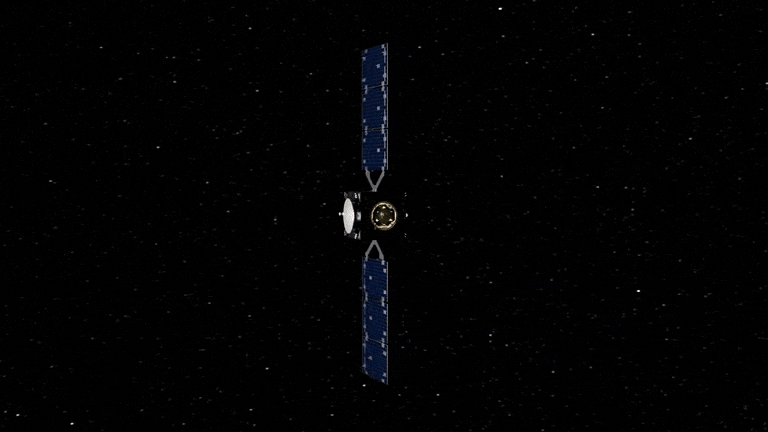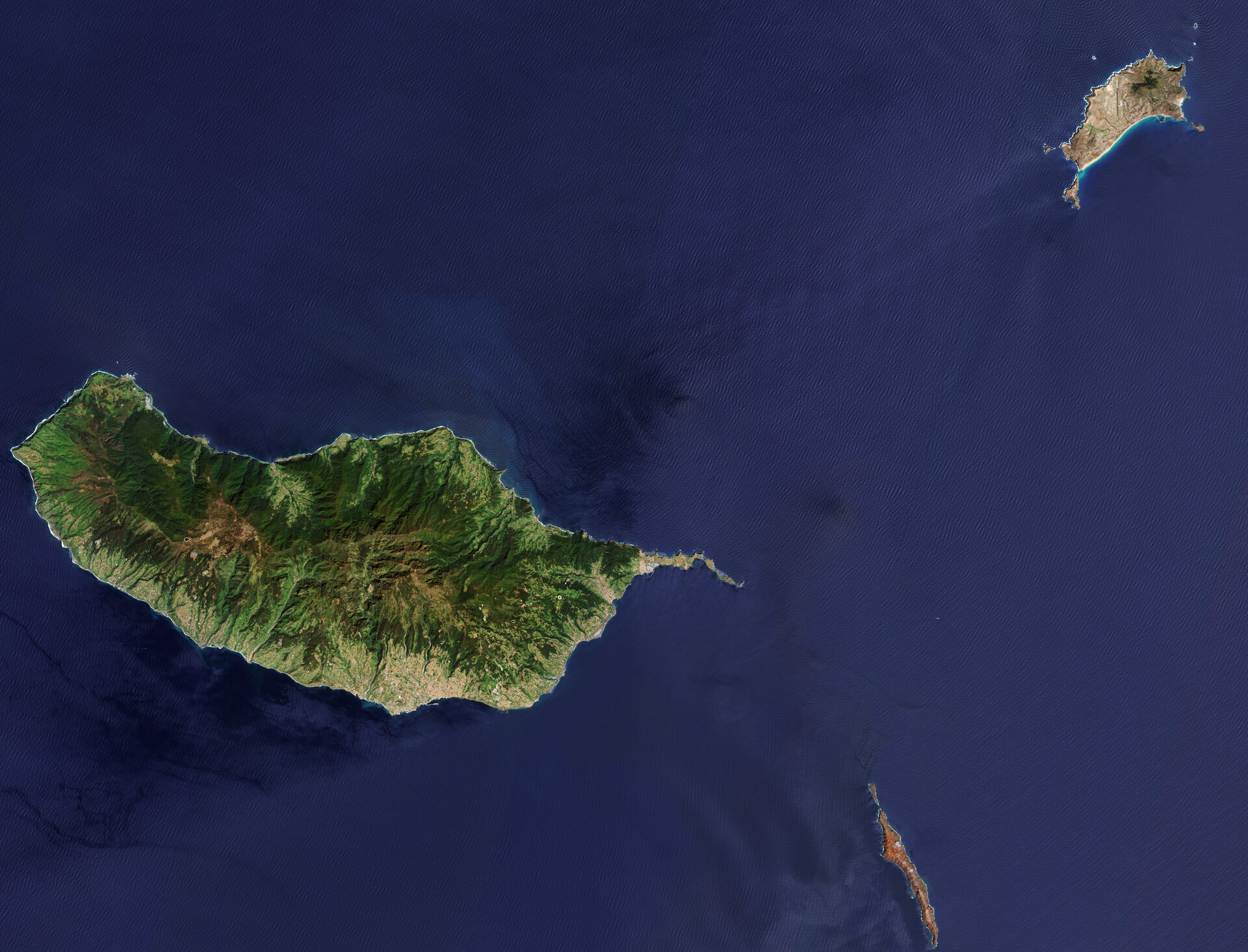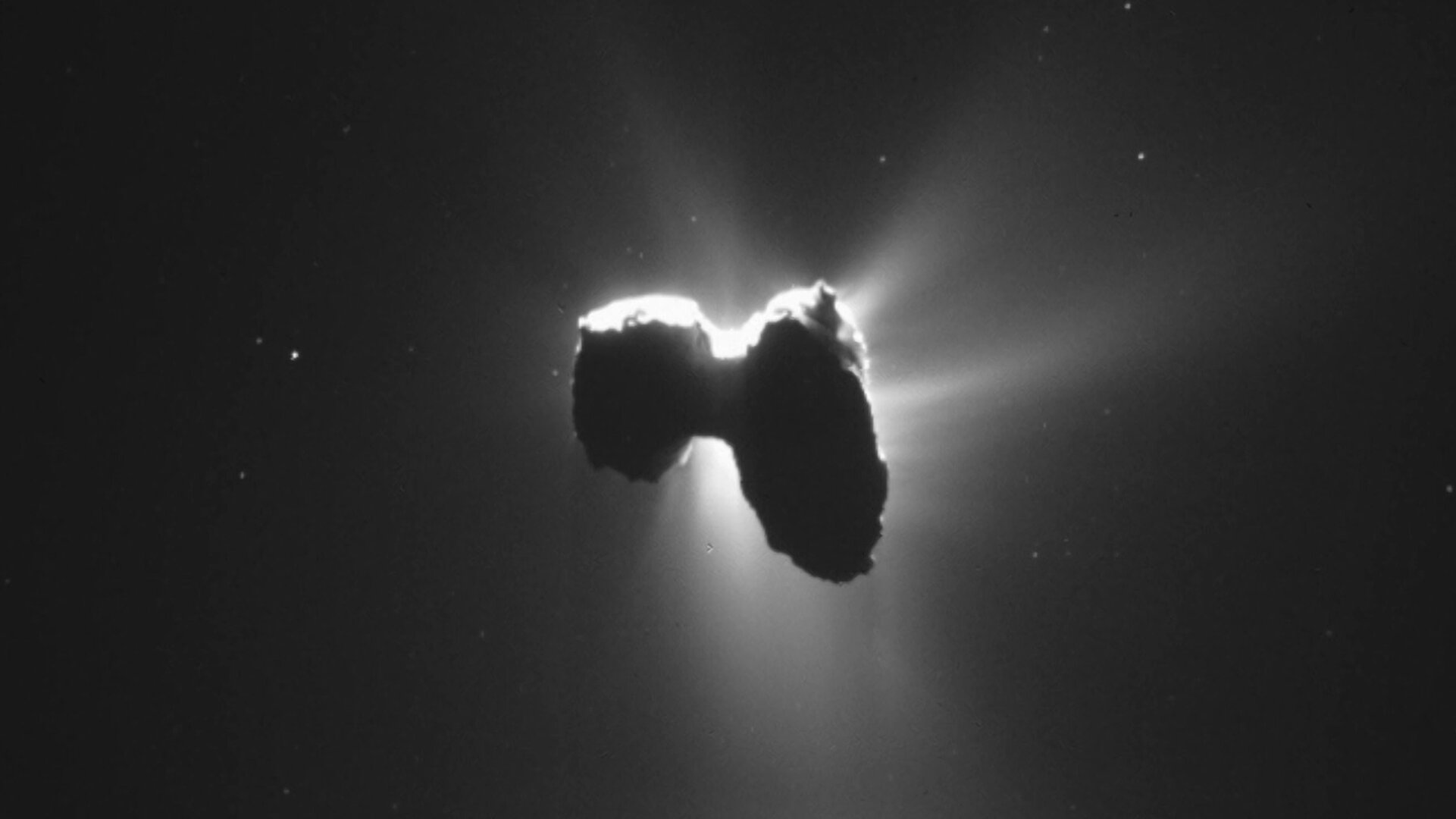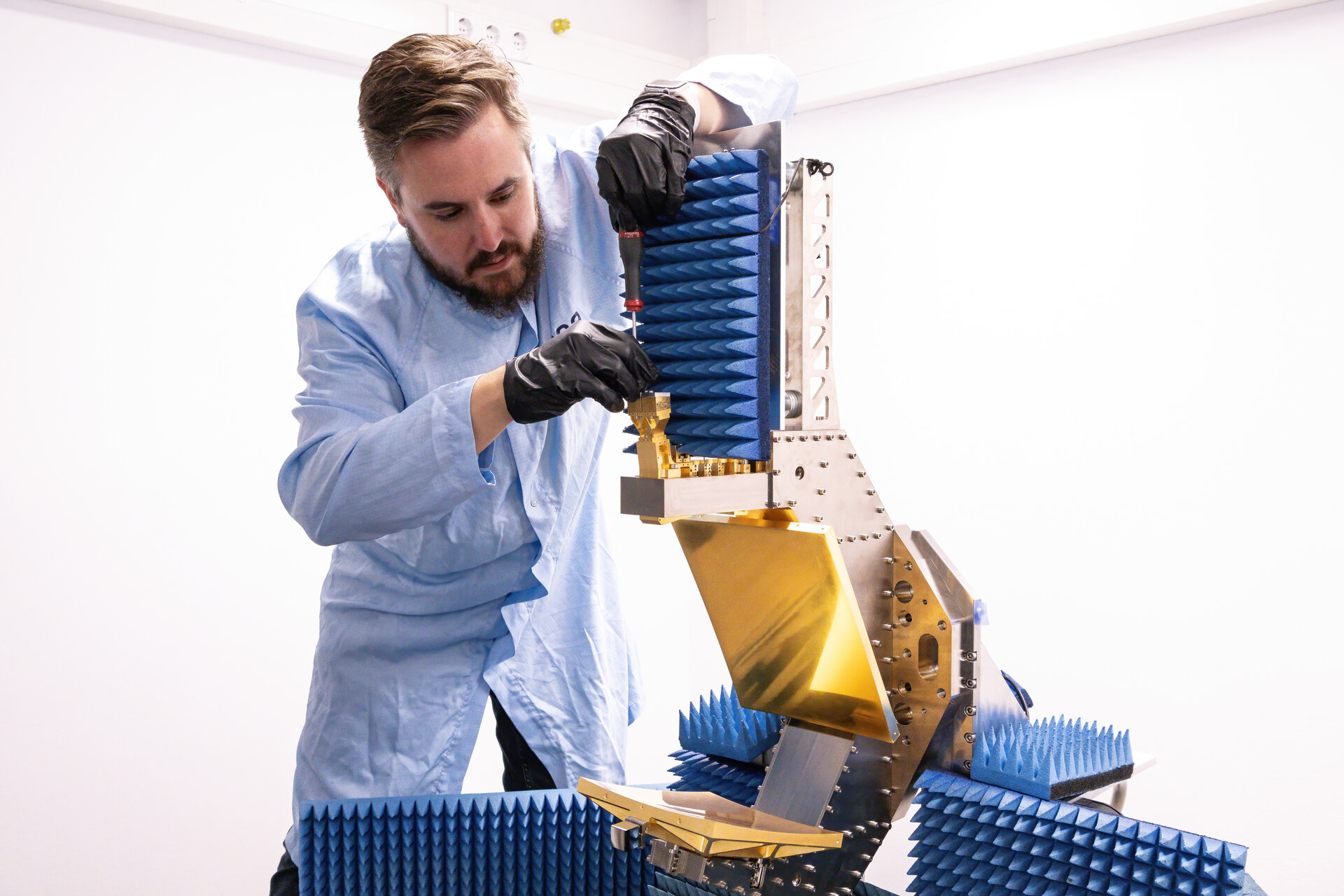08/11/2024
1493 views
33 likes
ESA’s Hera mission has completed the first critical manoeuvre on its journey to the Didymos binary asteroid system since launch on 7 October.
On 23 October, Hera fired its three orbital control thrusters for 100 minutes, kicking off its first deep-space manoeuvre and changing its velocity by approximately 146 m/s. A second burn on 6 November lasted 13 minutes with the aim of providing an additional boost of around 20 m/s.
Together, these burns have put Hera on a trajectory that will enable a gravity assist at Mars in March 2025.
“Deep-space manoeuvres are often split into parts,” explains Sylvain Lodiot, Hera Spacecraft Operations Manager. “The first, larger burn does most of the work. Then, after precisely measuring the spacecraft’s trajectory, we use the second, smaller burn to correct any inaccuracy and provide the rest of the required boost.”
The manoeuvre followed three successful test burns performed in the weeks after launch by Hera’s control team at ESA’s European Space Operations Centre (ESOC) in Germany.
The team used the Agency’s deep space radio dishes in Spain, Argentina and Australia to track Hera during the manoeuvre and to precisely measure its velocity before and after each burn.
“We are now analysing Hera’s new trajectory following the second burn,” says Francesco Castellini from ESOC’s Flight Dynamics team, the mathematical experts that keep ESA missions across the Solar System on track.
“It appears to have gone very well. We will execute a much smaller correction manoeuvre of a few tens of cm/s on 21 November to fine-tune the trajectory for the upcoming Mars flyby.”
Mars lends a hand
Hera is on a two-year journey to the Didymos binary asteroid system, where it will analyse the results of humankind’s first asteroid deflection experiment.
The recent deep-space manoeuvre was carefully calculated to line Hera up for a gravity assist in March 2025 that will shorten the travel time to Didymos.
“We are very fortunate that Mars is in the right place at the right time to lend a hand to Hera,” says Pablo Muñoz from ESOC’s Mission Analysis team, who planned Hera’s journey.
“This enabled us to design a trajectory that uses the gravity of Mars to accelerate Hera towards Didymos, offering substantial fuel savings to the mission and allowing Hera to arrive at the asteroids months earlier than would otherwise be possible.”
Hera will also use the Mars flyby for some opportunistic science. The ESA teams have designed a trajectory that will see the spacecraft fly past Deimos at a distance of just 300 km before passing Mars itself, offering a rare chance to study this small and mysterious martian moon.
Hera will then carry out a second deep space manoeuvre in February 2026 before a sequence of rendezvous manoeuvres from October to December 2026 brings it into proximity of the asteroids.
At Didymos, Hera will begin its mission to answer questions such as: How and why do binary asteroid systems form? When NASA’s DART mission impacted Didymos’s moonlet Dimorphos in 2022, did it leave a crater, or did it reshape the entire asteroid? What is Dimorphos’s internal structure?
Asteroid community gathers at ESOC
It’s a busy time for ESA’s asteroid teams. October saw the launch of the Agency’s first asteroid mission, Hera, and the start of work on its second asteroid mission, the proposed Ramses mission to asteroid Apophis.
Meanwhile, ESA’s Near-Earth Object Coordination Centre has continued discovering, tracking and analysing new asteroids from the ground and recently helped to identify the tenth asteroid ever discovered prior to Earth impact.
Next week, a team from the Agency’s Planetary Defence Office will meet with experts from around Europe and beyond at ESOC in Germany to discuss how to more accurately measure the size of potentially hazardous near-Earth asteroids. This workshop is funded by the European Commission.



